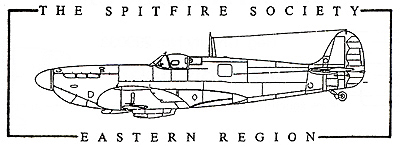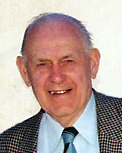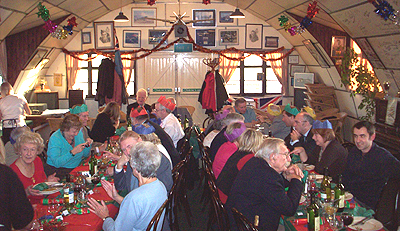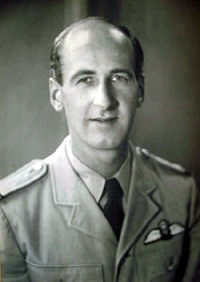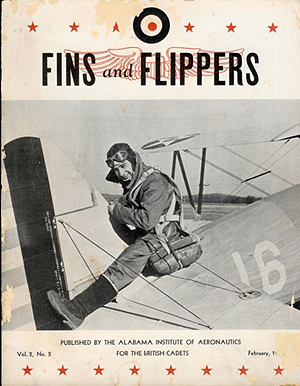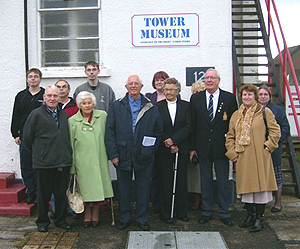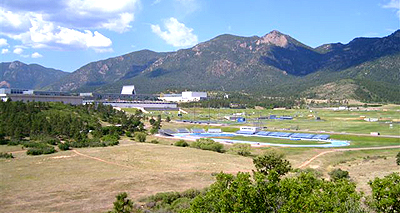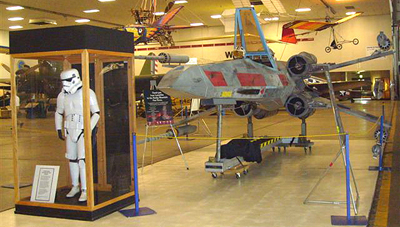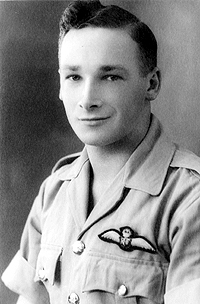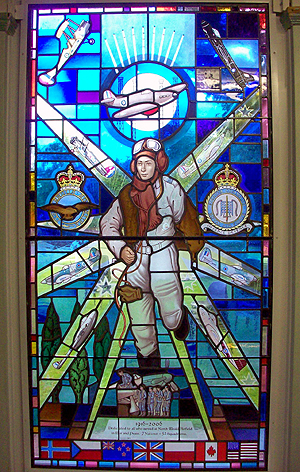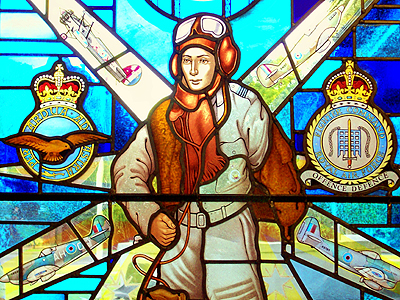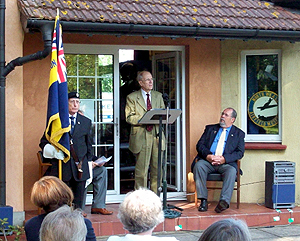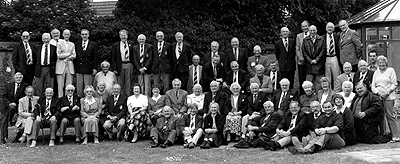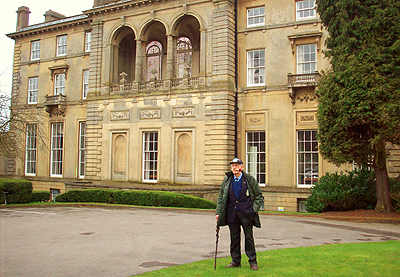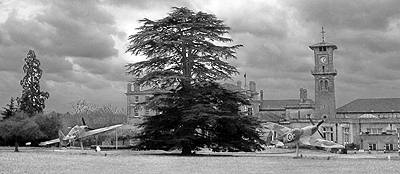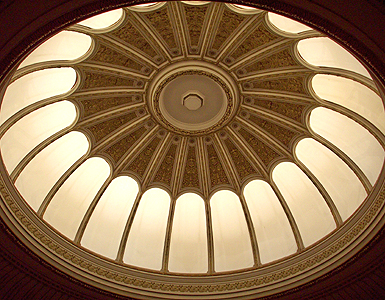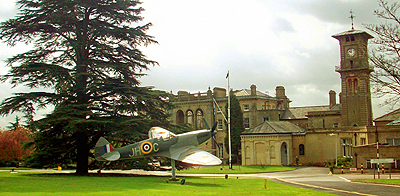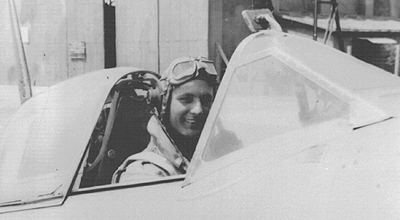 Home Page
Pat Butler
|
INDEX
The Memoirs of Reg Skolfield - Part 4
My Time with 208 (AC) Squadron
Aircraft Safari II - The Return
North Weald Commemorative Window
----------
As I put pen to paper at the start of the New
Year, I feel I can do so with a great deal of hope and
confidence for the future of the Spitfire Society. In a way it
is a relief to leave 2008 behind us; it was a sad year taking
from us several of our close and dear friends.
However, Eastern Region did enjoy a
successful year, although the weather at Duxford could have been
better, the October Air Show being a complete washout. We also
enjoyed some excellent visits.
I would like to appeal to all our members,
please try to attend the Eastern Region AGM at Old Warden on
Saturday 21st of March, and The Spitfire Society AGM
again at Old Warden on Saturday 25th of April. The
direction that our Society takes in the future depends upon your
support.
May I conclude by expressing my sincere
thanks to our committee and all our dedicated helpers. It is a
very special privilege to work with you all. David Williams
----------------------------------- It is with great
sadness that we once again begin this Newsletter with the news
of the loss of one of our best friends, as on the 6th of
December former 92 Sqn. Pilot and Regional Committee Member Len
Stillwell died. Len was a truly remarkable man who worked
tirelessly for our Society, and will be very much missed. A
tribute to him may be found herein the Form 700. In September
last year a new stained glass window commemorating ninety years
of North Weald Airfield was unveiled by Lord Tebbit at Ad Astra
House, the Airfields’ Museum. The window depicts a wartime
airman flanked by the crests of the Royal Air Force and Fighter
Command surrounded by aircraft which operated from North Weald
such as the Spitfire, Hurricane, Meteor, Vampire and Hunter, and
is dedicated to all those who served at the station during its
years as an RAF base. If any reader has yet to visit the museum,
here is a good reason to call in at this treasure trove of
aviation history. An illustrated article on the unveiling of the
window may be found elsewhere in this magazine and further
pictures are on the Gallery Page of the Regional Website. Also in this
Newsletter we continue Reg Skolfield’s overseas adventures, and
there is a fascinating account of Peter Sanders’ time with 208
Sqn. in post war Palestine. Ken Bradley’s serialisation
recounting his aviation training days has been very well
received and will be continued in the next edition. In this
number we feature as a follow-on from last time a splendid
excerpt from the wartime magazine ‘Fins and Flippers’, sent to
us from an overseas friend, which tells us more of the intrepid
Derek Sharp. We also continue the Aircraft Safari USA by our
roving reporter ‘Jedi Jason’ Amiss. For our next
visit, Bob Schofield has organised a specially discounted trip
to Chatham Historic Naval Dockyards. This really is one of those
places that everyone should visit at least once in their
lifetime and I cannot recommend it highly enough. Further
details and an application chittie can be found inside this
‘700. See you there! On Sunday the
14th of November regional member Squadron Leader Ian Blair DFM
laid a wreath on behalf of the Spitfire Society at the Cross of
Sacrifice adjacent to the Parish Church of St. Andrew, North
Weald, in memory of those service personnel from the airfield
who died during The Battle of Britain. The ceremony was followed
by a service inside the church in which the Reverend Frances
Drake gave a deeply moving address on the
Courage, Service before Self, Integrity and Bravery of the men
who fought in the skies in those dark days of war and why they
must never be forgotten. If anyone would like to read the
address I would be pleased to forward a copy, or the text may be
seen in full at the bottom of this web page.
Our Chairman David Williams laid a wreath for
the Annual Act of Remembrance at the N.W. Airfield Memorial on
Sunday the 9th November. This ceremony draws more and
more people each year and 2008 was the best yet with a very
large assembly. Obviously many members attend their own local
Remembrance Services, but if you would like to add your support
to either of the above ceremonies in the future you would be
most welcome.
Our special thanks to Eric Horwood for
preparing the memorial wreaths.
We had a busy time last year with our sales
stand in attendance at all of the Duxford air shows as well as
the Little Gransden Air Day which proved a novel and fun
departure for us. Thank you very much to all those who worked on
the stand, your help is simply invaluable.
We also had some splendid trips in 2008 culminating with a visit
to Bassingbourn Tower Museum, a review of which is to be found
inside this newsletter. Many thanks to those people who
supported and organised the visits.
Our Helpers and Committee Christmas Lunch at
The Squadron was another success last year although we were all
missing those friends who can no longer be with us. Our special
guest was Wing Commander Tom Neil who gave a splendid talk on the various marks of
Spitfire. We were also joined by regional member and Blenheim
Society stalwart Ron Scott, our special friend Ian Blair, and we
were particularly pleased to welcome Dorothy Nichols. Thank you
to all the people who supported the event, to the ladies
of the Squadron for a splendid lunch, to Wg. Cdr. Neil for his
marvellous talk, and to David Williams for organising the day.
The 2009 Air Show Season will soon be upon us
and I know that David Williams is already working hard to try
and secure places for us at Duxford again this year. As always
there is room for more helpers, so if you feel you would like to
lend a hand this year, please get in touch with Steve Beale as
soon as possible.
The Spitfire Society Eastern Region Website
is going very well with a marked increase in visitors to the
site. We are very proud of our website and feel that it reflects
well on our region and on the society as a whole. The new
Message Board is proving useful and the Gallery Page is also
very popular. We are aware that not everyone can get to a
computer so if there is a particular item that you may wish to
see but cannot access, please let us know and we will arrange to
have it printed out for you. H.Q. are currently overhauling the old Main Website which is really
something to look forward to. We will of course continue with
our Regional site which we are regularly updating and building
upon.
The Spitfire Society 25th
Anniversary Calendars for 2009, complete with stunning
photographs by Garry Lakin have proved very popular, with copies
literally flying off the shelf. At the unbelievably low price of
just £6.00 (including postage and packaging!)
there is still time to secure what will undoubtedly become a
much sought-after collectors item if, for some reason, you
still do not own one. Just get in touch with the ever-friendly
and helpful Jason Amiss (contact details on back page) and your
life could soon be complete. On a serious note Jason, often
aided by his Auntie Paula, put in a lot of hours of their time
doing vital work packaging and posting items to members all
around the world. This is greatly appreciated; Thank you both
very much indeed.
Congratulations to Peter Teichman whose
newest addition to the Hanger Eleven Collection, Hurri Bomber
IIb 5403, flew for the first time from North Weald on Tuesday
the 27th of January. Restored to pristine flying
condition by those wonderful craftsmen at Hawker Restorations
Ltd the
Hurricane, like the rest of Peter’s fleet,
will no doubt become a frequent and much loved sight in our
skies. More information on the collection as well as beautiful
photos and film of the Hurricane may be found at
www.hangar11.co.uk
Congratulations also to Stewart of The Royal
Oak, who despite being a keen enthusiast of aviation and
supporter of the Spitfire Society decided to keep his feet
firmly on the ground and is now doing great things keeping the
British Army on the move with the Royal Electrical & Mechanical
Engineers. Well done Stewart, Iechyd da!
Former Fighter Command and USAAF base
Lincolnsfields in Bushey now includes a remarkable “1940’s
House” as part of its “Forties Experience.” The centre, which
covers a 24 acre site and includes twelve original wartime
buildings, regularly hosts themed events designed to educate and
entertain including Living History Displays, Battle
Re-enactments, Period Rides, Costumes and Vehicles, Stalls,
NAAFI, and much more. Heavily involved in the whole thing is
Committee Member Ian Peak who will happily pass on further
information, or they have a splendid website at
www.fortiesexperience.co.uk
A special announcement now to our dear friend
Norman Lyons who has been having a very difficult time in recent
months with various health problems. Norman of course helped
form Eastern Region along with Pat Butler and Dennis Nichols.
We would like to take this opportunity to send you our Very Best
Wishes Norman, and hope that things improve swiftly for you.
The Eastern Region Annual General Meeting including the Pat
Butler Memorial Awards will again be held in the conference room
adjacent to the cafeteria at Old Warden on the 21st
of March, meeting for coffee from around 10.30 onwards.
Remember, this is your chance to have a say in how your region
is being run, so let’s see if we can perhaps improve on the
attendance figures which last year consisted of a grand total
(not including Committee and Helpers) of two members. It’s
actually a lot more fun than you might think, and last year we
even got to go on a behind-the-scenes tour of the restoration
workshops to see aircraft including the Spitfire V, which was
stripped down to its components, undergoing deep maintenance.
Your input is vital and valued; if you are able to attend please
do. We look forward to seeing you there.
P.W. ----------------------------------- Part IV
If you have not read Part I - III, you can find
them here: We were to lose
more men, one a youth named Verschoyle-Campbell, who did a roll
too low and hit the deck. He was a nice lad, son of a general,
but he threw his life away in one mad moment. Another's plane
was hit and caught fire over the Irrawaddy River. He attempted a
bailout, but his chute was caught in the tail plane. The bridge
over the giant river had been bombed, but it was the thing to do
to fly under one of the spans still standing. Bob Sheppard did
this, but I was too scared to attempt it. We would take turns
at message dropping to the Army. First you had to find them and
then do an accurate drop. On my return to Ye-u, our next base, I
decided to surprise the fellows who would be sitting outside the
Mess Tent with their beers, by flying upside down along the
airstrip, so that in the dark, my lights would be red to
starboard. I had actually never flown the Hurri’ upside down
before. It was rash: as soon as I was upside down the dust and
muck fell into the canopy with a hell of a noise. I pushed the
stick forward as hard as I knew how, and managed to roll back
safely at the end of the strip. A dam’ fool thing to do,
actually.
I had been with the
Squadron for less than three weeks, when we moved to Ye-u.
Barely three weeks after this we moved to Sadaung, and we were
there for just short of two months as the Japanese made somewhat
of a stand in Mandalay. We had two visits from Lord Mountbatten,
boss of SEAC, who sat on the back of a Jeep, and gave us a
pep-talk. Full of charm, he spoke for ten minutes or so and
never told us a thing. We also had visits from George Formby,
and Frances Day, both very entertaining under the night sky.
Frances Day was a popular singer, very saucy! I remember
hearing her sing a song over the radio pre-war, one line of
which ran like this: Do you do the breast stroke? In
Burma she was a stunning blonde, and when she sang to us, in one
number she knelt on one knee at the front of the stage and sang
the whole thing to me as I sat on the sand in the front row.
Very embarrassing. She came to our Mess for a drink, with Henry
Larsen very much in control. We rode with her in our Jeep, while
she sat on one of the Army officer's knee. We were frightfully
envious.
The Americans had been called in to bomb the
fort in Mandalay. They came in with B25's and bombed the
racecourse instead. This caused my mates great glee, since I had
annoyed them no end by extolling the virtues of America, and
even wearing a small enamel American flag on my shirt. It was
not every Britisher who had a fondness for all things American.
Peter Coppack, even in New York, had told me off for eating with
a fork. Why don't you eat properly with a knife and fork, he
complained. In our Mess, the seniors ate at one table, the
juniors at another. One evening, probably inspired by too much
beer, three or four of them grabbed hold of me and marched me to
the photography tent, where they were about to duck me in the
tank, when the man on duty reminded them this was precious water
they were about to pollute.
Sadaung had a beautiful
pagoda in the shape of a bell. This was built so strongly that
it had resisted a 100lb bomb, which simply bounced off it. It
was a great landmark when we were flying back from a mission.
One day I was instructed to photograph the inner walls of the
fort at Mandalay, and I set off with Dave Williamson as Weaver.
I chose a height of fifty feet and flew over all four walls at a
moderate speed. The results were disappointing and I am annoyed
to this day that I did not fly over fast at twenty-five feet. I
would have got much more detail that way. Another trip Dave and
I did together was along the Namtu River. I flew twice as far as
I needed to do, and when I attacked a boat deep in a gorge, and
Dave's plane was hit in the wing tank, he did not once complain.
Out of fifty nine operational flights, thirteen of them were
with Dave. He was a gentle, cultured young man from Edinburgh, a
gem to be with, and his wonderful grin was reassuring. Most
Scotsmen I knew tended to be either down in the dumps or as high
as a kite. I missed Dave when he joined Duggie, who took over
as CO of a P47 Squadron, the Republic Thunderbolt, which was
reputed to be short of power until it reached at least 2O
thousand feet.
One evening I was serving drinks in the Mess
Bar when Dave walked in. “I've just crashed a P47”, he
announced. “I could not get up enough speed to take off, and
crashed into trees at the end of the runway”. The plane broke
up, the engine being a hundred yards from the rest of the
wreckage. The pilot's compartment was, however, built
like a barrel, and it saved him. All he had was a bruised right
ear. After the War Dave became Plant Manager in the Middle-East
for twelve years with BP. On retirement he settled near Bury St
Edmunds “after looking at 29 houses”, said he wryly.
Only recently he died of a rare cancer which he thought was
caused by the pipe lagging in the plant. His wife Susan wrote to
me saying what a fine husband he had been to her and how
fortunate she had been married to him. He used to love to fly
Stearmans at Thornton Morley in Norfolk. On the Squadron his
favourite listening was to King Oliver and his Jazz Band. He was
sorely missed by absolutely everybody.
…. to be continued
------------------------------------
My Time with 208 (AC) Squadron
January - December 1947
By Peter Saunders I had been
transferred from Seletar (Singapore Island) South East Asia
Command to Ein Shemer (Levant Command) in January and was posted
to the squadron's Signals section. I was a Radio/Telephony
Operator servicing Spitfire IXs radios. This airfield was shared
with 32 Squadron also flying Spitfires and a Lancaster squadron.
Until the
British left Palestine in 1948, they were still carrying out
their duties under the mandate passed in 1920 and later ratified
by the League of Nations in 1922. There was unrest between the
Arabs and Jews, and as usual the Brits were the "thin red line"
between the two warring factions, although the Army personnel
were in greater danger than we RAF personnel being safer in the
confines of our airfield. However we were attacked by mortars,
unsuccessfully, in 1947 but early in 1948 the squadron lost
aircraft in ground attacks and in the air - one of the pilots
being shot down by another Spitfire of the Israeli Air Force.
They got their revenge later when an Egyptian aircraft was shot
down in a dog fight. The three main
Jewish terrorist organisations, the Stern Gang, the Irgun Zwai
Leumi (of which Menacheen Begin, later Prime Minister of the
newly formed Israel, was a member) and Haganah who promised to
kill any RAF servicemen if they caught them. In fact, two RAF
sergeants were murdered and their bodies booby-trapped by the
Irgun. The reason why
we were there was that the duty of the squadrons was to keep
track of the immigrant ships which were coming from Europe to
land their illegal human cargoes, at that time, in Palestine. When information
came from, say, Naples that a ship had sailed from there, the
Lancasters would do a "square" search to pick up their position
and plot them. When the ships came within range of the Spitfires
they also would search for them and radio in to the Royal Navy
in Haifa who would intercept the ships and turn them back before
they reached the 12 mile zone limit from the coast. You can see
why we Brits were not popular. The composition
of my squadron at that time contained some young pilots
supplemented by wartime veterans who had served in the Battles
of Britain and Malta and were peacetime regulars. Apart from a
couple of "old sweats", the squadron was run, mostly, by young
lads in the 19 to 24 year old range. One officer reckoned that
the maintenance was carried out by children! Later in the
year both Spitfire squadrons received the Mark XVIII; 32
Squadron receiving the fighter version and ourselves being
allocated the photographic reconnaissance type. We had a stroke
of luck in September, to coincide with Battle of Britain Week,
when we were sent on detachment to East Africa where we "flew
the flag" and our pilots gave aerobatic displays. The ground
crew, of which I was fortunate to be included, flew in Dakotas
via the Canal Zone, Juba and Khartoum to such places as Nairobi,
Entebbe, Kisumu and Zanzibar. There we were told to be on our
best behaviour as we were to be inspected by the Sultan and his
wifely entourage. Being avid cinema goers we fully expected his
wives to be a la Dorothy Lamore, the glamorous star of “The road
to Zanzibar". To our chagrin his wives were about 4 foot 6
inches tall and about the same amount wide, wearing burkas! A
great disappointment to us all. After that trip
I returned back to Ein Shemer to await my demob number (69)
coming up, which it did just after Christmas of 1947. I was
flown back to the Canal Zone by Lancaster, picked up a boat from
Port Suez and I returned home to a rather battered, austerity
England.
This is just a brief summary of my travels and I hope it doesn't
read too much as though I'm "line shooting". There were some
comical episodes of service life I have not included as I didn't
want to tell stories that, probably, many had heard before. If
you think it worth printing, fine, if not I won't be offended as
there are many who did much more that I.
------------------------------------- We were
contacted recently by a visitor to our website who has kindly
forwarded a copy of the ‘Fins and Flippers’ magazine from
February 1942. Published by the cadets in Tuscaloosa, Alabama,
it contains a wonderful article on RAF Cadet Derek Sharp who
featured in the previous Form 700 (see ‘Clipped Wings and Tail
Draggers’). Below is the article as it appeared all those years
ago: Tale of a Man on a Tail "Some are born
great, some achieve greatness, and some have greatness thrust
upon them" - but Derek Sharp does not suitably fit into any of
these categories. He is the man who was thrown to greatness.
This epic has now been described by practically every newspaper
man in the country; therefore it would be foolish to omit such
an episode from our own magazine.
It was the
afternoon of Wednesday, January 14th, 1942, that Derek M. Sharp
of Yorkshire, England, a British Cadet and Flying Instructor
McCausland added this hair-raising event to the history of
aviation. They took off from the Airport to fly around the field
a few times preparatory to Sharp taking the plane up solo, but
they were barely half way round before Fate herself took a hand.
The aeroplane hit a patch of turbulent air and performed the
most amazing gyrations: at first McCausland was not disturbed as
this was the usual procedure when a Cadet tried to fly ‘straight
and level.’ However the nose began to rise in the air at an
alarming angle, and the instructor thought it was about time
something was done. He turned round in his cockpit to give Sharp
the benefit of his observations and saw. . . (that's right). .
. nothing. McCausland therefore thought hard and fast. He
realised that somebody had flown the aeroplane that far and
therefore he could not very well have left Sharp back at the
Airport. He therefore looked below for an open parachute, and,
seeing none, glanced swiftly rearwards. . . . and there it was.
Aviation Cadet Sharp was performing the most amazing aerobatics
around the tail unit of the plane in best ‘barnstorming’ style,
and was certainly proving that Darwin's Theory of Evolution was
correct. McCausland took
up the plane to two thousand feet and looked round again to see
if Sharp would take to his parachute. Our plucky little hero,
however, was just now beginning to enjoy himself (?), and so
gave the ‘thumbs up'’ signal - with both hands just to show that
he was thoroughly acclimatised, and could ride ‘no hands’. His
instructor was therefore able to see that Sharp had very
thoughtfully omitted to fasten the leg straps of his 'chute, so
was not able to jump anyway; so, resigning himself to his fate,
and probably blessing British Cadets in general, and Sharp in
particular, McCausland prepared to land. They came into the
Airport at Half Throttle, and it was then that we appreciated
how our instructors could fly. The plane settled gently on its
two wheels, and after running along for a little, the tail
touched down and the plane gradually came to a stand-still with
Sharp, the Flying Miracle, still perched precariously on the
tail. His only injury was a large bump on the head, but as
McCausland states that he is solid bone from the neck up, it
could not have hurt him much. We dashed across
the field to congratulate Mr. McCausland and to offer our
sympathies to him at having such a problem child, who, when
asked why he vacated his seat in the cockpit, said, "It must
have been the Gypsy in me". It is not true
that Mr. McCausland is leaving for a sanatorium to recover from
a nervous breakdown, but he can be seen frequently buying
bottles of hair-restorer at his barber's. On their return both
participants declared that it could never have been done without
"Ticklers Toothpaste", "Pigwhistle's Pants" and of course
liberal doses of "King's Cod Liver Oil". This then is the
story of one of nature's freaks, and it bears a moral to
civilians and airmen alike - ''Always fasten your belt or you
may lose your dignity". You may have
thought that after reading this story, you have heard
everything; but stay, the most unorthodox airman of this era has
another miracle to further arouse your amazement. Just six days
had passed when Sharp again proved to the world that he was born
to be hung and that a mere aeroplane was certainly not fitted to
be his executioner. He was preparing
to take-off when Cadet Sidney A. Sims in another plane, decided
that Sharp looked most inviting for a soft landing. The plane
came down and the wheels hit the wing about six inches from
Sharp's head, actually cutting off a portion of the wing itself.
Sims flew around again and made a perfect landing, whilst Sharp
descended and looking resignedly at his ship said "I wonder just
how long this can last". Personally I think that if Sharp fell
into the river fully dressed, he would come out washed, shaved,
and with clothes cleaned and pressed.
Our
Archivist, Steve Williams, has discovered that Sharp’s luck
finally ran out on the 26th June 1943, when the
Lancaster he was piloting (R5740) was lost without trace during
an operation over Gelsenkirchen. He and his crew are all
commemorated on the Runnymede Memorial.
-------------------------------------------
October 2008 Our day
started with us meeting at The Crown public house in Litlington,
inside of which is a fine collection of photos and prints
relating to the 355th Fighter Group.
After a nice lunch at the pub we all drove the short distance to
the memorial at the site of Steeple Morden Airfield where the
355th FG was actually based. It is a lovely memorial featuring a
P51 Mustang propeller as its main focal point; well worth a
visit if you are in the area. We then drove on to Bassingbourn.
After checking in at the main gate we made
our way to the Tower Museum where we were met by Ray, Robin and
John who proceeded to give us an excellent tour of the building,
allowing us to roam freely and answering any questions we came
up with. Originally constructed in 1937, Bassingbourn came into
service as a Wellington base for the RAF in 1938. In 1942 the
Americans moved in with the 91st Bomb Group, which
included the famous ‘Memphis Belle’. After the war it became a
base for Canberras, and in 1968 the RAF moved out after deciding
it was not large enough to be used for the ‘V Force’. The base
is now used as an army training Centre.
A big Thank You to everyone who came on the
visit and to Bob Schofield for organising a great day out.
J.A.
------------------------------------- Aircraft Safari II - The Return Jason Amiss During my recent visit to the good ol’ USA, I was fortunate to visit a few places in Colorado and Utah that may be of interest to my fellow Eastern Region members. The first place I went to was the vast USAF Academy at Colorado Springs. The site was opened in 1954 after having been chosen from 400 other possible locations - the first cadets enrolled in 1959. Nowadays nearly 4,000 cadets enroll every year to undergo four years of training to become Air Force Officers. Sports fans amongst us will be interested to know it is also home to the USAF Falcons American Football team.
Next on my travels was a visit to the former site of Camp Hale near Leadville, Colorado. During WWII this was the training base for the 10th Mountain Division, a unit activated after the realization of the need for specially trained mountain forces. Situated in the Rocky Mountain Region it was an ideal choice due to its extreme terrain. The unit went on to serve with distinction in Italy at Mount Belvedere and Della Torracia. My last visit, on the day I was due to fly home, was to the Wings Over The Rockies Museum in Denver. Sited on the former Lowry Air Force Base which was a bomber training school and chosen in 1958 as the first Titan ICBM base, it is now a vast residential and shopping estate; a problem familiar to many in this country, I think. The Museum’s collection consists of over forty ‘planes, including most of the F-100 series, B-18a Bolo, B-52b, F-86, Sabre, B-1a Lancer (one of only two in existence), F-14, and the highlight for me, being a Star Wars fanatic, a two-third scale X-Wing fighter from the original and best Star Wars movie. The museum also has a nice selection of exhibits on the Flying Tigers, Air America, and Chuck Yeager. As before, should anyone require further information or pictures, please feel free to contact me. J.A. ------------------------------------------- Len Stillwell
It is with great sadness that we have to report the death of Len Stillwell who passed away on the 6th of December 2008. Len had been unwell for some months and was in hospital when things took a turn for the worse from which he did not recover. It had been an ambition of Len’s from a young age to learn to fly and this ambition was realised during the war when, after completing his training in Southern Rhodesia, he gained his Pilots Wings and was posted to 92 Squadron in Italy. Starting with the Hurricane, Len went on to fly the Mk.V Spitfire before progressing to the Mks VIII and IX for combat duty. 92 Sqn. was at this time providing close ground support with 244 Wing as was 241 Sqn. with whom our late former Chairman Dennis Nichols was serving; the two squadrons flew from the same airfield but it would be many years later when, via the Spitfire Society, they would meet and become good friends. During this time over Italy Len was wounded when an enemy shell hit his aircraft, badly injuring both of his legs. Despite this Len was back in action flying again after a short respite. Unfortunately these injuries were to plague him for the rest of his life, particularly in later years. As a member of the Spitfire Society, Len’s contribution was beyond measure. Together with his wife Dot, who also passed away last year, Len was always to be found at air shows and events manning the Eastern Region Sales Stand and signing endless prints, photos and books to help raise vital funds. As a Committee Member for Eastern Region, Len did fantastic work with the acquisition of stock for our stand and organising the helpers to sell it. During his time on the Committee, from the early eighties right up until the last months of his life, Len was responsible for helping raise countless thousands of pounds for the Spitfire Society. Even in later years when so much of his time and energy was devoted to looking after Dot as she became increasingly frail, Len still gave what precious energy he had left to do whatever he could for us, and as a respected elder statesman his words of guidance and advice were received with gratitude by younger people as they came on to the committee. He was a true inspiration. But it is as a very dear friend that we shall remember him the most; Len was one of the kindest, warmest, most genuine and sincere people one could hope to meet and we will miss him very much. The last words go to our Hon. Secretary Steve Beale who was particularly close to Len: “I knew Len for a long time and over the years we became very good friends. Carol and I helped Len and Dot as much as possible and we all enjoyed each others company. When Dot passed away last year we made sure Len was not left alone. It was a sad loss to me personally when Len died last December. I now feel a large void in my daily life. I know that some day I will meet up with him again and continue our friendship. I feel very privileged to have known Len and am very thankful that he called me his friend.” Thank you, Steve. God Bless, Len; we will always hold your memory close to us. P.W. ------------------------------------- 90th Anniversary Commemorative Window On the 14th of September 2008 a stained glass window commemorating the 90th anniversary of North Weald Airfield was unveiled by Lord Tebbit at Ad Astra House, the North Weald Airfield Museum.
Dedicated to all those who served at the airfield during it’s years as an RAF station the window, situated adjacent to the Museum’s main entrance, depicts a young pilot rushing to ‘Scramble’, surrounded by images of various aircraft which flew from North Weald including the Hunter, Vampire, Meteor, Typhoon, Hurricane and of course the Spitfire. Flanking the airman are the crests of the RAF and Fighter Command, and at the foot of the panel are the flags of the seven nations that operated from the airfield in wartime and in peace. The artwork is stunning and represents a beautiful, evocative, and worthy tribute to the story of this legendary airfield.
Prior to the unveiling on that gloriously sunny afternoon Steven Wagstaffe, the Chairman of the Museum Trust spoke to the assembled crowd about the historic significance of the airfield and the extensive fund-raising campaign which was required to make the commemorative window a reality. Museum Vice-President Arthur Moreton then gave a fascinating and passionate talk about the history of the airfield, the squadrons that operated from North Weald, the aeroplanes that they flew and the hazards that they faced. Finally, before revealing the window, Lord Tebbit spoke about the need to remember the men and women who lived and died at North Weald, and about his own time at the airfield as a Meteor pilot on the Operational Readiness Programme during the Cold War, recalling the spectacle of 100 plus fighters bearing down upon an equal number of bombers during NATO exercises.
The ceremony was attended by a good number of local dignitaries, veteran pilots and ground crew, diverse people associated with the airfield, and members of the press. The occasion was a great success and thoroughly enjoyed by all who attended. Afterwards, Steve Wagstaffe told me that the day had been everything he hoped it would be and that he wished to thank all the people and friends of the museum who donated funds to make the whole thing possible. Our congratulations to all at North Weald Airfield Museum for this wonderful achievement. P.W. -------------------------------------- One from the archives - a lovely picture taken at the Society AGM in 2000 - some very distinguished members present - can you name them? (left click on the photo to bring up a bigger version) Here's a selection of photos taken on the last Society visit to Bentley Priory before it was sold off:
Dipping into the archives again, a wonderful picture of our friend, the late Peter Cunningham:
Do you have any photos that you think might interest us? Please send them to me at gerrycrutchley@spitfiresociety.org.uk and I will post them here for all to see. ---------------- Commemoration of the Battle of Britain 2008 address by the Rev'd Frances Drake It is a great privilege to be here today - and I thank you for the Invitation - to share in this Service of Commemoration and Remembrance - of the Battle of Britain. As the words in the 'Act of Remembrance' remind us that: 'We are remembering before God ....... those who fought and died in Service - in the Battle of Britain - treasuring memories - and pledging to keep alive the memory of all those who died in the Royal Air Force - and in the Air Forces of the Commonwealth.' My own knowledge of the war is very limited - although not entirely non-existent. I am a war baby - but along with many others of my generation over the years - I have listened with interest and admiration - to accounts of various war time experiences - including the Battle of Britain. Living relatively locally to here - at Navestock - with a Father who was in charge of a 'Home Guard Unit' at Stapleford Abbots - and living in a family - where my sister Joan - my parents first child, was killed in 1940 - during the Battle of Britain - and as the direct result of a jettisoned German Bomb - I have experienced and heard a great deal about war time events - and what people lived through - both in the Forces - and in civilian life. I almost 'cut my teeth' on what have become immortal words from Winston Churchill. 'Never in the field of human conflict - was so much owed - by so many - to so few' My parents would often speak of Churchill's speech to the House of Commons in the June of 1940: 'You ask', he said - 'What is our aim? I can answer with one word - Victory' - and he went on to say. 'Victory at all costs. Victory in spite of all the terror. Victory, however long and hard the road may be. We shall not flag nor fail. We shall defend our island to the end - with confidence - strength and courage'. So today - we remember those who led and inspired - as well as those who fought. And we remember those civilians - who kept on going - in spite of the pain - the terror - the deprivations - and death itself. Each of those who fought - and who are remembered at this time - has won a glorious grave - not that grave of earth wherein they lie - but the living grave of everlasting remembrance - wherein their glory is enshrined. A Remembrance that will live on the lips - that will blossom in the deeds - of their countrymen - the world over. For the whole world is the tomb of heroes. Monuments may rise and tablets be set up to them in their own land - but on far-off shores there is an abiding memorial - that no pen or chisel has traced; because it is graven - not on stone or brass - but on the living heart of humanity. Let us take these men as our example. Let us like them - remember that prosperity can only be for the free; that in the words of Pericles of the 5th Century - 'freedom is the sure possession of those alone - who have courage to defend it'. We are to take these men for our example. There is always a danger however - that things - events - memorials - even our own Christian faith - can become purely nostalgic - a memory of past things - sometimes becoming distorted and false in our memory -something that older people do - and young people tolerate - but the true meaning and value is lost in time. History can become an empty husk - fragile - and eventually meaningless. But our celebration today is far from an empty husk - and if we seek to understand it properly - it transcends a particular time in history - or even the RAF - or our nationality - because it is about the men and women who made the history. It is about their values - their courage - their sacrifice - and their characters. This is what is valuable. This is what should be our treasure - not merely as nostalgia - but as an example of something real and substantial. For they have lived the values - that should still be relevant today - and everyday after today. The values we celebrate in a Service such as this - do not change. They are values for every generation and nationality - that those who wish to live their lives to the full - will recognize and acknowledge - and take for an example. This is not nostalgia - but is rather - real and abiding - and something worthwhile to pass on from one generation to the next. The facts of the Battle of Britain are simple. In 1940 - out numbered, and fighting for their lives - a few stood up to the many - and said - 'You will not pass. You will not overcome. You will not break our spirit'. What we celebrate - what we admire - is the courage and character of those young men - that gave them the strength - to put themselves between the enemy and their homes and families - and achieve the apparently impossible.
And what are these values?
They are sacrifice and service. Values that are also central to
the Christian faith; for Jesus came into the Some years ago - I was called out to attend to an elderly man who was dying. It turned out he had fought in the Battle of Britain. He had been ill for some time, and over the course of three years - both his legs had been amputated - not in one operation - but during a number of these. As I knelt beside him - ready to give him the last rites - just as he wanted - he could see that I was upset. He took my hand and said - 'Don't worry Vicar - I've been going to heaven in instalments'. Sacrifice and service runs through a person's life - just like a thread through cloth. For that wonderful elderly man - it was there as he fought in the Battle of Britain. Sacrifice and Service was there - as he and his wife worked to make a home for their children. It was there when he nursed his wife through a long and painful illness. It was there when he arranged her funeral. And - it was there - as he himself died whilst offering comfort to a young priest. So these are the values that we celebrate today. Courage; Service before self; Integrity and Bravery. It is all these things - and so many more - but the most important is Self Sacrifice. Sadly - they do not appear to be valued very much by the world. But to me they are everything. They are the difference between a life well lived - even if it was cut short - and a selfish life. They are the gifts of God - what I would call grace - or the gifts of the Spirit. They are the values that help us walk beyond our natural desire for self-preservation - to meet instead - the needs of the common good - of others. What we can all agree on is - that they are at the pinnacle of what it means to be a human being - for they are the values that we see lived out perfectly in the life of Our Lord Jesus Christ. And as we think about them - we see in their reflection - that the values so dearly loved by this world - are only shadows - they are like sand that passes through the fingers and is gone - but that the values we celebrate today - are solid and hard won. They are often scorned by those who are weak and self serving - but equally eagerly embraced by those who see beyond themselves - those who have the courage to sacrifice their lives for others - who they do not even know. Those men and women are those - who recognize what is truly good - and who have the courage to defend it against all odds. So let us continue to tell the story of the Battle of Britain to our children and grandchildren. Let us tell them - how the Luftwaffe had to destroy the Royal Air Force - before it could invade. Tell them - how at the beginning of the battle - 2,790 German aircraft were sent against 650 aircraft of the RAF - who struggled day after day to survive. And then - when your children ask you how they managed and won - tell them that the adversity had exposed their true character - and it was solid - and gave them the courage to lay down their lives - not because they wanted to - but because they recognized that there are some things - which are more important even than life itself. 'Never in the field of human conflict - was so much owed - by so many - to so few' Amen
--------------------------------------- Form 700
is produced by Peter Wesson and Gerard Crutchley. The previous issue of
Form 700 (#53 Autumn 2008) can be found here: |
||

